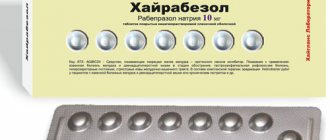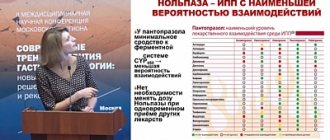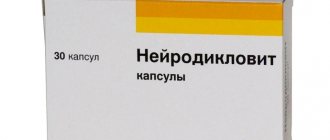Vascular diseases of the brain are one of the leading causes of mortality and disability [19, 27]. A special place among cerebrovascular diseases is occupied by chronic cerebral ischemia, including in the form of hypertensive encephalopathy (HE) [19]. HE is a progressive disease accompanied by the development of multifocal or diffuse ischemic brain damage, cognitive impairment, decreased quality of life, social maladaptation and disability of patients [13]. The development of GE is associated with damage to intracerebral arteries with a diameter of 70–500 μm and the microvasculature of the brain against the background of long-term uncontrolled arterial hypertension (AH) [8]. It is known that the resulting hypoxia of nerve cells triggers all three main mechanisms of their death: glutamatergic excitotoxicity, oxidative stress and apoptosis, which are interconnected and are mutually potentiated during the development of ischemia [9, 21]. However, given the variety of options for the formation of chronic cerebrovascular insufficiency, as well as the insufficient effectiveness of existing methods of treatment and prevention of this pathology, it is relevant to assess the role of disorders of both the arterial and venous components of cerebral blood flow in the development of GE [5]. In addition, the combination of several factors in the pathogenesis of chronic cerebral ischemia, leading to the emergence and progression of dysregulation in the blood flow-metabolism system, has the most adverse effect, causing a severe course of the disease [16].
One of these factors is venous pathology, in particular venous hypertension [5]. V.A. Waldman [6] distinguished venous hypertension, including physiological (constitutional, tonogenic).
Subsequently, the works of many authors showed the role of the initial tone of the veins, constitutional and hereditary factors in the development of cerebral venous circulation [4, 5, 17]. Venous vessels make up a significant volume of the vascular bed (85%), therefore venous discirculation has a significant impact on the state of cerebral hemodynamics and the course of chronic cerebral ischemia [4]. Currently, a pathogenetic subtype of GE has been identified, in the formation of which constitutional venous insufficiency (CVI) plays a role. Such patients have a characteristic clinical and neurological symptom complex, and the presence of cerebral venous circulation in them is confirmed by instrumental methods [3, 14].
Issues of pharmacotherapy of cerebral venous discirculation still remain insufficiently developed. The pharmacodynamics of the cerebral veins has been little studied due to the significant variability of the cerebral venous system and the lack of simple objective methods for recording changes in blood flow parameters in the intracranial venous bed [14, 17, 23]. Traditionally, in the treatment of patients with cerebral venous discirculation, a group of vasoactive drugs that facilitate venous outflow is of great importance. However, venous hemocirculation is also affected by drugs that do not have a direct vasomotor effect, such as antioxidants [25]. It is necessary to take into account that with the long-term existence of venous dystonia, microcirculation is disrupted, hypoxia and hypercapnia increase, and therefore, in this pathology, drugs that increase the brain’s tolerance to hypoxia, affecting the metabolism of nervous tissue, the functional activity of the brain and the rheological properties of blood can be effective [ 5, 25].
One of these drugs is the domestic neuroprotector cytoflavin, whose effectiveness in acute and chronic cerebrovascular accidents has been proven in previously conducted multicenter placebo-controlled studies [1, 2, 15, 16, 18, 20, 22]. Cytoflavin is a complex substrate composition of well-known and widely used metabolites: succinic acid in the form of Na, N - methylglucammonium succinate, riboxin and two coenzymes - riboflavin and nicotinamide. The drug has a positive effect on the processes of energy production in the cell, reducing the severity of oxidative stress and suppressing the excessive release of excitatory neurotransmitters under ischemic conditions [11, 16]. To date, there has been no analysis of the effect of antioxidant therapy on the dynamics of neurological status and cerebral hemodynamics in patients with CVI.
The purpose of this study was to evaluate the safety and effectiveness of cytoflavin in patients with HE and CVI.
Material and methods
The study included 60 patients, 45 women and 15 men (mean age - 43.4±6.3 years), with stages I and II HE and CVI.
The diagnosis of GE and the stage of the disease were established on the basis of criteria accepted in Russian neurology [24]. The criteria for KVN were: the presence of complaints in patients characteristic of this pathology; the presence of venous pathology in several typical localizations (varicose veins and thrombosis of the veins of the lower extremities, hemorrhoids, varicocele, varicose veins of the esophagus), family “venous” history [4, 6, 17]. The criteria were: the presence of somatic diseases that may cause secondary disorders of venous circulation; severe somatic, mental, endocrine, hematological, oncological, infectious diseases; cerebral stroke in the acute or recovery period up to 1 year; pregnancy, lactation; taking other antioxidant or nootropic drugs within the last 3 months.
Patients were randomized using the envelope method into 2 groups of 30 people. Patients of the main group, 8 men and 22 women (average age - 44.7±3.9 years), received cytoflavin from the 1st to the 25th day of observation, inclusive, 2 tablets 2 times a day against the background of standard basic therapy. Patients in the comparison group, 7 men and 23 women (average age - 44.2 ± 8.5 years), received standard basic therapy: 100 mg of acetylsalicylic acid, individually selected antihypertensive drugs. The control group consisted of 30 practically healthy individuals, comparable to patients by gender and age.
Clinical and instrumental examination of patients was carried out before the start of therapy and over time on the 25th day of treatment. The examination included: general and neurological examination; general and biochemical blood test; ECG; psychometric assessment using scales and questionnaires; Ultrasound examination of cerebral hemodynamics.
For psychometric examination, the following was used: visual analog scale (VAS) - to assess the intensity of the cephalgic syndrome; asthenia scale - to assess the level of asthenic disorders; scale for assessing autonomic disorders; personal questionnaire of the Bekhterev Institute to determine the type of attitude towards the disease; questionnaire SF-36 (Medical Outcomes Study 36-Item Short-Form, MOS SF-36) to study quality of life (QoL). The SF-36 questionnaire consists of 8 scales: physical activity (PF); physical role functioning (RP); physical pain (BP); general health perception (GH) - physical component of health (PCS); vital activity (VT); social functioning (SF); role functioning due to emotional state (RE); mental health (MH) is the psychological component of health (MCS).
The state of cerebral hemodynamics was assessed using an algorithm for complex ultrasound examination (US) of the cerebral vascular system based on the concept of its construction at 5 functional and morphological levels [14]: 1st structural and functional level - common carotid arteries (CCA), internal carotid arteries (VCA), vertebral arteries (VA); Level 2 - middle cerebral artery (MCA); Level 3 - microvasculature (MCR); 4th level - direct sinus (PS); Level 5 - internal jugular veins (IJV), vertebral veins (PV). The study was carried out with a Viamo SSA-640A ultrasound scanner (Japan) using linear sensors with frequencies of 7.5 and 2.5 MHz. The structural characteristics of the vessel were assessed; linear blood flow velocity (LBV) - maximum (Vmax), minimum (Vmin), time-averaged maximum (TAVmax); resistance (IR) and pulsation indices (PI); volumetric blood flow (Vvolmax). To study the MCR, the reactivity of the veins of Rosenthal (VR) was assessed in a test with an orthostatic load on a verticalizer up to an inclination of 60-80°.
Statistical data processing was carried out using the Statistica 8.0 software package. Data are presented as arithmetic mean and standard deviation (M±m). Differences at p<0.05 were accepted as significant.
Special instructions for the use of the drug Cytoflavin
Use with caution for nephrolithiasis, gout, hyperuricemia. Can be used during pregnancy (in the absence of allergic reactions to the components of the drug). In critical conditions, the drug should be used after normalization of central hemodynamic parameters. It is possible that blood glucose levels may decrease (which must be taken into account when prescribing), and urine may turn light yellow. In case of hypertension (arterial hypertension), dose adjustment of antihypertensive drugs may be required.
results
The influence of cytoflavin on the clinical picture of the disease
It was found that during treatment with cytoflavin, the frequency of complaints of headaches of occipital localization or diffuse, aggravated by factors that worsen venous outflow (p<0.0001), increase dizziness (p<0.03), and cause loss of coordination (p) significantly decreased. <0.03), increased fatigue and sleep disturbances (p<0.01). 10 (33.3%) patients stopped making complaints about memory impairment. The dynamics of specific “venous” complaints are noteworthy: on the 25th day of the study, patients in the main group had a statistically significant decrease in the frequency of complaints about pastiness of the face, eyelids (p<0.02) and the feeling of “sand in the eyes” (p<0.02). 04) in the morning, none of the patients receiving cytoflavin complained of the inability to wear tight collars and ties or sleep on a low pillow. No statistically significant changes were detected in the comparison group (Table 1).
| Table 1 |
Using stepwise discriminant analysis, it was shown that the clinical effect of cytoflavin was most clearly manifested in relation to complaints of headache, the feeling of “eyes being covered with sand” in the morning, coordination problems and the “high pillow” symptom.
In the neurological status on the 25th day in the main group, the frequency of detection of soreness of exit points and hypoesthesia in the innervation zone of the first branch of the trigeminal nerve decreased by 63.3% (p<0.001). A number of authors associate the development of this symptom with neuropathy caused by venous stagnation and impaired microcirculation in the vasa nervorum system of this branch [2, 4, 6, 24, 25].
Assessment of pain intensity using VAS showed that the severity of headache on the 25th day of observation decreased in both groups, however, in patients receiving Cytoflavin, the intensity of cephalgic syndrome was significantly (p<0.05) less pronounced compared to patients in the comparison group. A decrease in the incidence and severity of cephalgia during cytoflavin therapy may be associated with an improvement in both the emotional state of patients and cerebral venous hemodynamics [26].
When assessing the indicators of the SF-36 quality of life questionnaire on the 25th day of observation (Table 2)
| Table 2 |
| ]]> |
There was a statistically significant increase in all indicators on QoL subscales in both groups.
At the same time, the increase in quality of life indicators in the group of patients receiving cytoflavin was more pronounced and averaged 10-40 points, and in the comparison group - 6-19 points. The greatest increase in the main group was noted in the following indicators: BP (average 40 points), SF (34 points), VT (33 points), RE (31 points). Patients noted that they became more energetic, performed their daily duties easier, and physical pain had less impact on behavior and activity. The mental component of health also improved: patients were less focused on poor health, had more contact with others, and took an active part in current events. The nature of the subjective clinical manifestations of the disease (QoL) influences the formation of the patient’s type of attitude towards the disease [7]. During the treatment, 5 (16.6%) patients in the main group with an inharmonious type moved to the group with a harmonious type of attitude towards the disease. In the comparison group, changes in the type of response were observed in 2 (6.7%) patients.
Asthenic conditions are one of the common manifestations of cerebral venous dyscirculation syndrome, including in hypertension [4]. Clinically significant asthenia (more than 50 points on the asthenia scale) was noted in 26 (86.7%) patients in the main group and in 21 (70.0%) patients in the comparison group (p>0.05). The subjects complained of sleep disturbances, irritability, tearfulness, decreased memory and attention, difficulty in assimilating information, the need for additional rest that did not bring relief, and sexual disorders. Testing carried out on the 25th day of observation showed that in all patients the manifestations of asthenia decreased statistically significantly. Moreover, such positive dynamics were significantly (p<0.03) more pronounced in the group receiving cytoflavin.
When assessing the level of autonomic disorders on the 25th day of the study, their statistically significant decrease was established in both groups, however, in the group receiving cytoflavin, autonomic disorders were significantly less pronounced both during an objective examination (p<0.02) and during a subjective assessment (p<0.001).
To identify the most “significant points” for the use of cytoflavin in patients with HE and CVI, determined using the specified questionnaires and scales, a step-by-step discriminant analysis was carried out. The most sensitive to the action of cytoflavin were autonomic disorders, assessed using a subjective autonomic questionnaire (p<0.001), and the severity of cephalgic syndrome, assessed using a VAS (p<0.04).
Dynamics of ultrasound indicators while taking cytoflavin
All patients underwent ultrasound examination of the cerebral vascular system according to the algorithm described above.
A study of vessels of the 1st and 2nd structural and functional levels revealed changes corresponding to the remodeling characteristic of hypertension: slight tortuosity of the CCA (71.7%) and VA (73.3%); increase in the intima-media complex; blood flow depression; increased peripheral vascular resistance (PVR) indices. Atherosclerotic changes in the main arteries of the head (MAG) - stenoses less than 20% - were detected in 36.7% of patients in the main group and 40.0% of patients in the comparison group. When studying dynamics in both groups, no changes were found in the indicators characterizing PSS, at the same time, speed indicators underwent changes (Table 3).
| Table3 |
| ]]> |
On the 25th day after the start of therapy in the group receiving Cytoflavin, all speed indicators became comparable to the control.
In the comparison group, blood flow indicators in the vessels of the 1st level improved without reaching control values; in the vessels of the 2nd level they did not change. The condition of level 3 vessels was studied in a test with orthostasis (Table 4).
| Table4 |
| ]]> |
The orthostatic test leads to activation of the myogenic mechanism of autoregulation of cerebral circulation with polysegmental vasodilation of cerebral arteries, a decrease in BFV and an increase in PVR indices [10, 12, 23].
Normally, venous reactivity to orthostasis corresponds to the severity of arterial changes [10]. Initially, no decrease in BFB in orthostasis was detected in any group of patients. In dynamics, on the 25th day of observation, a statistically significant decrease in all speed parameters in orthostasis was established in the main group compared to background values, which indicates an adequate response and an increase in hemodynamic reserve. It is known that the amount of hemodynamic reserve in a number of cerebrovascular diseases largely determines the effectiveness of treatment and prognosis [5]. In the comparison group, no similar dynamics were detected. The positive effect of cytoflavin on the state of reactivity of Rosenthal veins was confirmed by the statistical method of introducing a new variable and assessing the effectiveness of treatment. Changes in cerebral hemodynamics at the 4th and 5th structural and functional levels of the cerebral vascular system in the examined patients corresponded to the Doppler pattern characteristic of HE with CVI: an increase in speed parameters according to PS; an increase in the lumen area and insufficiency of the ostial valves of the IJV; decrease in LSC for IJV; increase in volumetric blood flow along the IJV and PV [3, 14]. When assessing cerebral hemodynamics on the 25th day of observation, no statistically significant changes were detected in any group. However, in the main group there were positive trends: an increase in LSC in the IJV; decrease in BFV and volumetric blood flow velocity along the PV. These changes indicate an increase in venous outflow from the brain in a horizontal position in the IJV basin, which is characteristic of normal venous cerebral hemodynamics [14, 17, 23].
The positive effects of cytoflavin on the state of cerebral hemodynamics in patients with HE and CVI were confirmed by the method of step-by-step discriminant analysis (Table 5).
| Table5 |
| ]]> |
It can be assumed that the previously proven metabolic and energy-correcting effects of cytoflavin [1, 11, 15, 16, 18-20, 22] entail an improvement in microcirculation with a subsequent positive effect on the state of cerebral hemodynamics as a whole.
Safety assessment of Cytoflavin
During the study, cytoflavin demonstrated high safety of use: during the entire observation period, patients receiving the drug did not experience intolerance, side effects, unwanted interactions with basic therapy drugs, or deterioration of laboratory and electrophysiological parameters. It should be noted that, against the background of the pronounced antiasthenic effect of cytoflavin, there were no side effects from its use in the form of increased irritability, episodes of psychomotor agitation, or sleep disturbances. Compliance with the therapy in the patients included in the study was 100%.
Thus, the study showed that course therapy with cytoflavin in a dosage of 2 tablets 2 times a day for 25 days in patients with HE and CVI leads to a significant improvement in clinical symptoms (reduction in the frequency of complaints of headache, dizziness, sleep disturbances, noise in ears, increased fatigue; reduction in the frequency of specific “venous” complaints - pastiness of the face and eyelids, a feeling of “sand in the eyes” in the morning, etc.); has a positive effect on psychological status (reducing the severity of asthenic and autonomic disorders); leads to improved quality of life of patients. The use of cytoflavin in patients with stages I and II HE and CVI has a positive effect on the state of all structural and functional levels of cerebral hemodynamics, including the microvasculature and venous hemodynamics. The results obtained in this study allow us to recommend the use of cytoflavin as part of complex therapy in patients with stage I and II HE and CVI.
Side effects of the drug Cytoflavin
With rapid intravenous drip administration, undesirable reactions may occur that do not require discontinuation of the drug: hyperemia of the skin of varying severity, a feeling of heat, bitterness and dry mouth, sore throat. With long-term use in high doses, transient hypoglycemia, hyperuricemia, and exacerbation of gout are possible. Rare adverse reactions include short-term pain and discomfort in the epigastric region and chest area, difficulty breathing, nausea, headache, dizziness, “tingling” in the nose, dysosmia, pallor of the skin of varying severity. Allergic reactions such as itchy skin are also possible.
Drug interactions Cytoflavin
succinic acid, inosine, nicotinamide are compatible with other drugs. Riboflavin: reduces the activity of doxycycline, tetracycline, oxytetracycline, erythromycin and lincomycin. Incompatible with streptomycin. Chlorpromazine, imizine, amitriptyline, by blocking flavin kinase, disrupt the incorporation of riboflavin into flavin adenine mononucleotide and flavin adenine dinucleotide and increase its excretion in the urine. Thyroid hormones accelerate the metabolism of riboflavin. Reduces the severity and prevents the side effects of chloramphenicol (disturbance of hematopoiesis, optic neuritis). Compatible with drugs that stimulate hematopoiesis, antihypoxants, and anabolic steroids.





